CSS Development
CSS (Cascading Style Sheets) is a crucial technology used in web development to control the presentation and layout of HTML elements. It allows web developers to define how the content of a web page should be displayed, including fonts, colors, margins, padding, positioning, and more. CSS plays a fundamental role in separating the structure (HTML) from the presentation (CSS) of a web page, making it easier to maintain and update websites.
HTML (Hypertext Markup Language) is a fundamental technology for web development, and it offers several benefits that have contributed to its widespread use and importance.

Types Of Css:
CSS Selectors
Selectors are patterns used to target HTML elements that you want to style. Common selectors include element selectors (e.g., h1, p, div), class selectors (e.g., .classname), ID selectors (e.g., #elementID), and more advanced selectors.
- Lead Generating
Properties and Values
CSS properties define the visual aspects of an element, such as its color, size, margin, padding, and more. Properties are paired with values that specify how the property should be applied. For example, color: blue; sets the text color to blue.
- Lead Generating
CSS Box Model
The box model describes the structure of an HTML element as a rectangular box. It consists of content, padding, border, and margin. The padding is the space between the content and the border, while the margin is the space outside the border.
- Lead Generating
Units
CSS supports various units for measurements, including pixels (px), em, rem, percentages (%), viewport units (vw, vh), and more. These units are used to define sizes and distances in a consistent way.
- Lead Generating
Selectors Specificity
Specificity determines which styles are applied when conflicting rules target the same element. It's calculated based on the combination of selector types and the number of instances of each type.
- Lead Generating
Inheritance
Some CSS properties are inherited by child elements from their parent elements. For example, if you set a font color on a parent element, the child elements will inherit that color by default.
- Lead Generating
Pseudo-classes and Pseudo-elements
Pseudo-classes are used to define styles for specific states of an element, such as :hover for when the mouse pointer is over an element. Pseudo-elements are used to style specific parts of an element, like the first line or the first letter of a paragraph.
- Lead Generating
Maintainability and Reusability
Properly structured HTML code is more maintainable and reusable. Using semantic elements and organizing the code improves readability, making it easier for developers to understand and modify the codebase as the project evolves.
- Lead Generating
Responsive Design
Responsive design aims to create web pages that adapt to different screen sizes and devices.
Media queries (@media) are used to apply styles based on screen dimensions.
Techniques like Flexbox and CSS Grid help create flexible and responsive layouts..
- Lead Generating


